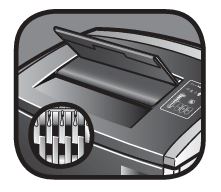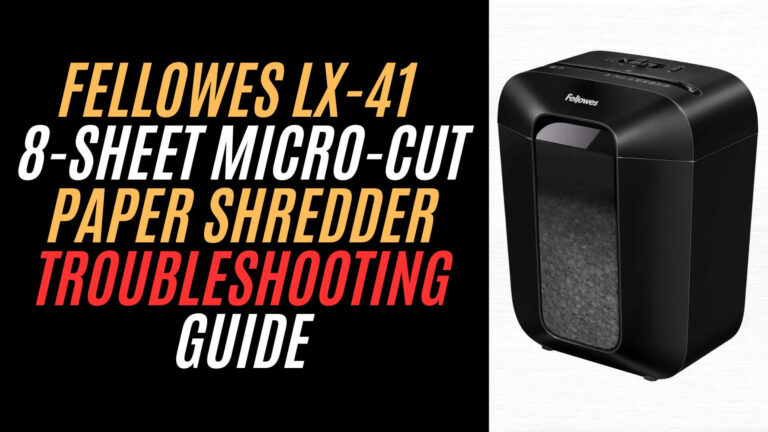Paper shredding is a vital activity for businesses and individuals concerned with confidentiality, but it comes with a common byproduct: paper dust. If left unmanaged, this fine debris can accumulate, causing overheating, reduced efficiency, and frequent maintenance issues. Proper paper dust management is crucial for ensuring the long-term performance of your Fellowes C-420C shredder.
Ignoring paper dust accumulation can lead to several issues that hinder the performance and lifespan of your shredder.
Here’s why managing it is essential:
- Prevents Overheating: Dust can clog ventilation systems, reducing airflow and causing the motor to overheat.
- Maintains Efficiency: A clean shredder operates smoothly, with fewer disruptions caused by dust interference.
- Reduces Maintenance Needs: Regular dust management minimizes the need for frequent repairs or part replacements.
- Improves Air Quality: Managing paper dust ensures a cleaner environment, especially in office settings.
In this guide, we’ll explore practical strategies for preventing and managing paper dust build-up effectively.

Common Causes of Paper Dust Build-Up
Paper dust build-up in shredders like the Fellowes C-420C is a common issue that can lead to inefficiency and frequent maintenance. Understanding the causes of paper dust accumulation helps in preventing and managing it effectively.
Here are the expanded causes:
1. High-Volume Shredding
Frequent shredding of large volumes of paper produces fine debris that accumulates inside the shredder.
- Impact: Dust can clog the cutting mechanism, ventilation, and sensors, leading to overheating and performance issues.
- Prevention: Regularly empty the waste bin and clean the shredder after extensive shredding sessions.
2. Shredding Non-Standard Materials
Materials like damp paper, adhesive labels, or coated sheets can produce more debris than standard dry paper.
- Impact: These materials create residue on the blades and sensors, increasing the amount of dust and interfering with operation.
- Prevention: Stick to the manufacturer-recommended materials to minimize dust production.
3. Inadequate Ventilation
Poor airflow around the shredder traps paper dust, particularly near the motor and internal components.
- Impact: This leads to overheating and reduces the lifespan of the shredder.
- Prevention: Place the shredder in a well-ventilated area with adequate space for airflow.
4. Full or Overflowing Waste Bin
An overfilled waste bin allows paper fragments and dust to spill back into the shredder mechanism.
- Impact: The overflow can block sensors and clog the cutting mechanism.
- Prevention: Empty the waste bin before it reaches its maximum capacity.
5. Lack of Regular Cleaning
Paper dust builds up over time when the shredder is not cleaned regularly.
- Impact: Accumulated dust affects blade performance, sensor accuracy, and motor function.
- Prevention: Schedule routine cleaning to ensure dust doesn’t accumulate in critical areas.
Step-by-Step Guide to Managing Paper Dust
Proper management of paper dust is essential to ensure smooth operation and long-term performance of your Fellowes C-420C shredder.
Follow these expanded steps to effectively manage paper dust:
Step 1: Turn Off and Unplug the Shredder
- Ensures your safety and prevents accidental activation during cleaning.
- How to Do It: Turn off the power switch and unplug the shredder from the outlet.
Step 2: Empty the Waste Bin
Prevents overflow that can cause dust to re-enter the cutting mechanism.
- Remove the waste bin carefully to avoid spilling.
- Dispose of the paper shreds in a sealed bag to prevent dust from dispersing.
Step 3: Clean the Cutting Blades

Dust accumulates on the blades, reducing cutting efficiency.
- Use compressed air to blow away fine particles stuck on the blades.
- Apply Fellowes-approved shredder oil to lubricate the blades and reduce friction.
Step 4: Inspect and Clean Sensors

Dust can block sensors, leading to operational issues like false activations or malfunctions.
- Locate the sensors near the paper entry slot.
- Gently clean them with a cotton swab dipped in rubbing alcohol.
- Blow compressed air to clear any remaining debris.
Step 5: Wipe Down the Interior and Exterior
Cleaning the entire shredder prevents dust from settling on internal components and external vents.
- Use a dry, lint-free cloth to wipe the interior surfaces.
- Clean the exterior with a damp cloth to remove dust and smudges.
Step 6: Check and Maintain Ventilation
Proper airflow prevents dust from accumulating in the motor area.
- Ensure the shredder is placed in a well-ventilated location, away from walls or enclosed spaces.
- Clean any vents or grills with a soft brush to remove trapped dust.
Step 7: Use a Dust Cover
A cover prevents airborne particles from settling on the shredder when it’s not in use.
- Cover the shredder with a fitted dust cover or a clean cloth.
- Ensure the shredder is powered off and unplugged before covering.
Step 8: Schedule Regular Maintenance
Routine maintenance ensures long-term dust management and overall performance.
- Clean the shredder every two weeks for standard use or after every heavy shredding session.
- Perform a deep clean, including blade lubrication and sensor inspection, once a month.
Preventive Tips for Long-Term Dust Management
- Schedule Monthly Deep Cleaning: Perform a thorough cleaning of all internal components once a month.
- Replace Filters if Applicable: Check the manual for any filters that may need replacement and change them as recommended.
- Lubricate the Blades: Proper lubrication reduces friction and minimizes the production of fine particles during shredding.
- Monitor Usage: Avoid overloading the shredder, as excessive shredding sessions can generate more dust.
- Keep the Area Clean: Regularly clean the surrounding workspace to reduce external dust sources.
Frequently Asked Questions (FAQs)
How often should I clean my shredder to manage paper dust?
Clean your shredder every two weeks or after heavy shredding sessions. Perform a deep cleaning once a month.
Can paper dust damage my shredder?
Yes, accumulated dust can clog ventilation systems, block sensors, and interfere with blade performance, leading to overheating and inefficiency.
Is it safe to use compressed air to clean my shredder?
Yes, compressed air is ideal for removing fine dust from hard-to-reach areas like the blades and sensor components.
What materials should I avoid shredding to minimize dust production?
Avoid shredding damp, dusty, or adhesive-coated paper, as these materials can produce excessive debris.
Does the Fellowes C-420C have features to minimize dust build-up?
While it doesn’t have specific dust prevention features, regular maintenance and proper usage significantly reduce dust accumulation.
Conclusion
Effective paper dust management is crucial for maintaining the performance and longevity of your Fellowes C-420C shredder. By following the steps and preventive tips outlined in this guide, you can ensure smooth operation, reduce maintenance requirements, and create a cleaner workspace. Scheduled cleaning, proper ventilation, and responsible shredding habits are key to keeping your shredder dust-free and efficient.



